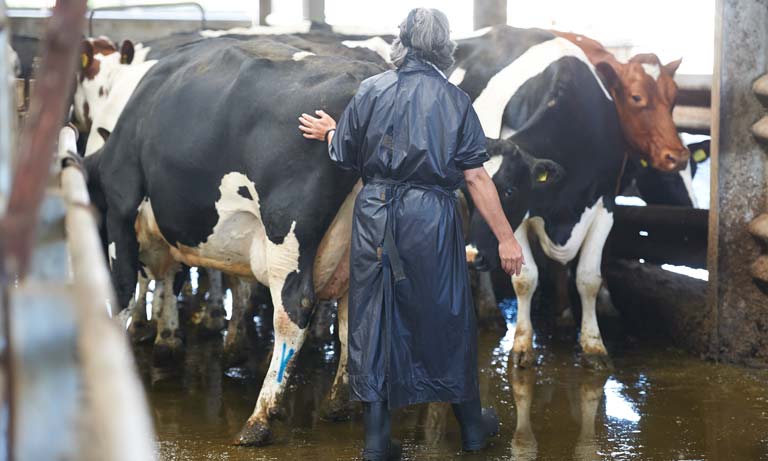Standing up for the veterinary profession
08 Aug 2024
Dr Gareth Enticott explains why BVA's new bovine TB policy places behavioural science front and centre and why behavioural sciences have much to offer the control of bovine tuberculosis.

In the absence of a ‘magic bullet’ – vaccines and near-perfect diagnostics – behavioural interventions become all the more important. Even with them, they remain important: think of the effort required to persuade people to use vaccines on themselves or their animals these days. Veterinary disease control should therefore begin with a recognition that disease is a social, as much as a biological, challenge, much like human diseases or any other problem facing government. The starting point for a challenge like this is an understanding of why people do things so that policies can be designed to influence decisions that can affect whether diseases are eradicated or not.
Potentially, the behavioural sciences have much to offer the control of bovine tuberculosis. This is because the system of control is complex, involving many different organisations and people taking a wide range of decisions. Just think of all the different people and activities that can influence how bTB may spread, and how disease control is conducted. Their decisions may reflect long-standing patterns of behaviour shaped by cultural influences, such as what friends and colleagues do. A good example is the way information on bTB tests is passed to farmers.
As the BVA’s policy statement recognises, the binary distinction between ‘confirmed’ and ‘non-confirmed’ bTB is confusing and misleading, contributing to a lack of trust in bTB diagnostics. Finding a different way of communicating these results and their meaning – perhaps by using a scale similar to cancer diagnoses in human health – is one way of using behavioural approaches to manage bTB better.
Where the decisions people take are contrary to the aims of disease control, behavioural scientists hold out the prospect of being able to change these behaviours in a number of ways. Some behavioural scientists, for example, believe that some simple changes to the ways in which information and choices are provided can help people make the best decisions to control disease. For example, providing information on what most other people do can be an effective way of guiding people to the ‘best’ decision. Other examples include using ‘defaults’ to ensure that the ‘best’ option is pre-selected, framing messages to emphasise losses rather than gains, or using financial incentives.
When it comes to bTB, compensation is often seen as a means to alter farmers’ behaviour. Varying compensation levels, as suggested in the BVA’s new policy document, could theoretically act as incentive to persuade farmers to buy cattle from low-risk areas, or from herds that have not had bTB for many years wherever they may be located. Other countries have used incentives in the form of social ‘status’ to encourage farmers to purchase cattle from low-risk areas or herds. Rating all herds based on the number of years they have been free from bTB may encourage farmers to only buy cattle from herds that have similar status. After all, no one likes losing a good reputation that they have built up over years.
Of course, the big question is: would these techniques work? Behavioural science provides no magic bullets, or easy fixes. Approaches that focus on changing an individual’s behaviour without recognising the wider context may have short-lived, if any, success. Farmers’ decisions, for example, may be locked into set patterns of behaviour that are difficult to change. Without significant structural changes to the social and economic environment to make behavioural changes possible, blaming farmers for not adopting new practices is misguided. Rather, what is required is to involve people in the creation of policies themselves, so that they feel part of solutions, and perceive them to be fair.
This is the real behavioural challenge for bTB: farmers for a long time have felt distanced from bTB policy, perceiving it to be one-sided and unfair. Calls for better partnership working such as those made by the BVA’s new policy statement can help address this challenge, as they have done for the management of bTB in other countries. Creating new systems of governance for bTB may be initially uncomfortable for some, involving letting go of traditional ways of working. However, if the solution to bTB lies in changing behaviour, then this will only be achieved by challenging existing systems and finding better ways of working together.
Find out more about the launch of our new BVA policy on bovine TB and read our policy documents on our website.
Get tailored news in your inbox and online, plus access to our journals, resources and support services, join the BVA.
Join Us Today